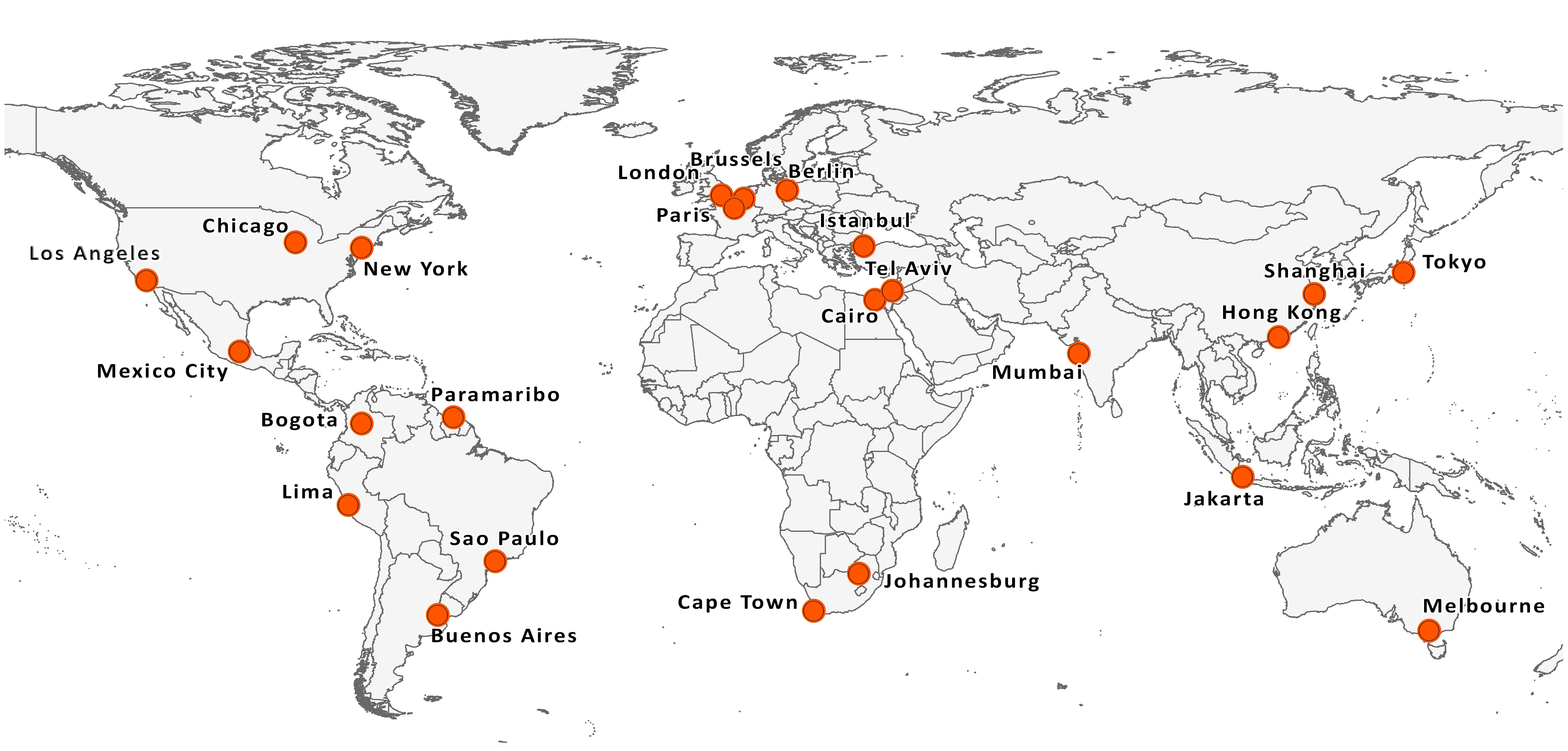1.3.2 Global segregation book
Course subject(s)
1. Opening: Global segregation
Would you like to learn more about income inequality and socio-economic segregation in large cities around the world?
The OPEN ACCESS book Urban Socio-Economic Segregation and Income Inequality: a Global Perspective (2021) gives you a true global overview of trends in income inequality and socio-economic segregation in a large number of cities all over the world. The book provides a global coverage, and it includes 24 case study cities in Africa, Asia, Australia, Europe, North America, and South America. Author teams with in-depth local knowledge provide an extensive analysis of each case study city, focusing on the link between income inequality and socio-economic residential segregation. The central research question of the book was whether there is any evidence for a Global Segregation Thesis, or whether cities in different parts of the world show very distinctive patterns of socio-economic segregation.

Illustration by R. Ubarevičienė, CC BY-NC-ND 4.0
Based on the case studies we have formulated five main conclusions.
- There is general trend of professionalisation of the occupational structure of cities, with an increase in the share of high-income occupations, and a decrease in the share of low-income occupations. As many high-income workers have a preference for living in central cities, this explains the changing social geography of urban inequality.
- Segregation as measured city-wide by the Dissimilarity Index (DI) has increased for most cities (except Cape Town, Johannesburg, Mexico, and Buenos Aires, and excluding some cities with problematic data). Based on our results we expect levels of segregation to increase further in the future, as inequality is increasing, and because in the last decade processes of gentrification have temporarily caused central areas of cities to become more mixed in terms of income.
- The higher the level of inequality, the higher the level of segregation. This relationship becomes stronger when lagged inequality data is used. This is because when inequality levels increase, it takes time for this to be reflected in the geography of inequality.
- Generally speaking, middle-income countries combine high levels of inequality with high levels of segregation, while high-income countries combine lower levels of inequality with lower levels of segregation. Over time we see that there is convergence between the higher and lower income countries; levels of inequality and segregation in the higher income countries are going up and the gap between the higher and lower income countries is decreasing.
- The geography of social inequality is changing faster than levels of segregation measured by the Dissimilarity Index. In most cities the rich are moving to the centre and attractive coastal regions, and the poor are being pushed to the edges of the urban region. Where this does not happen, or sometimes in combination with this trend, the rich also concentrate in enclaves and gated communities.
Taken together, these findings have resulted in the formulation of a Global Segregation Thesis: All over the world, increasing levels of income inequality are leading to increasing levels of socio-economic segregation.

Building Inclusive Cities: Tackling Urban Inequality and Segregation by TU Delft OpenCourseWare is licensed under a Creative Commons Attribution-NonCommercial-ShareAlike 4.0 International License.
Based on a work at https://online-learning.tudelft.nl/courses/building-inclusive-cities-tackling-urban-inequality-and-segregation/



